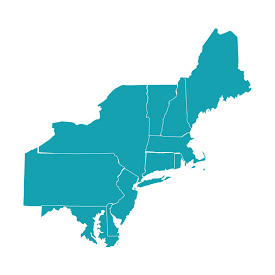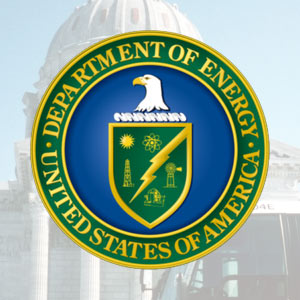 November Steering Committee Meeting
November Steering Committee Meeting
The Forum Steering Committee met on November 8, where NEEP presented an update on the progress of the EM&V 2.0 grant, reviewed the status of 2016 projects including deliverables planned for the remainder of the year, and provided links to deliverables completed since July 2016. See the Steering Committee presentation here and the Steering Committee meeting notes here.
Importantly, Sue Coakley, NEEP’s Executive Director, presented the changes that NEEP and the EM&V Forum will be undergoing for 2017. She noted that NEEP 2.0 is moving to a more diversified funding model, which draws on a mix of federal grants, funding from industry partners through an Allies program, charitable foundation funding, and state and program administrator funding. State and program administrator funding will be defined largely through state partnership agreements and will include many Forum activities, although some explicit co-funded projects, such as the mid-Atlantic TRM, are also options. Federal sources of funding include the likelihood of some contributions from the Energy Information Agency to assist in continuation of the REED database and associated analysis. They also include the EM&V 2.0 State Energy Partners grant from DOE.
For the Forum, changes in 2017 include evolving the committee structure. Members of the Steering Committee have been invited to join the EM&V Forum Leadership Committee which will broaden its composition to reflect a regional perspective, to help guide the direction of the Forum, and to convene for in-person idea exchange (at venues such as the NASEO meeting or via teleconferences). The EM&V 2.0 Project Team will comprise a second committee with roles and responsibilities defined by that project scope and three-year duration. Finally, the Forum Project Committee will be redefined as the EM&V Stakeholder Community, which will allow the committee to evolve toward more interaction among engaged stakeholders from the evolving industry landscape.
 EM&V Related Policy Developments - Regional and NARUC
EM&V Related Policy Developments - Regional and NARUC
Various states in the region and NARUC have recently delivered various types of EM&V guidance. These highlights were identified courtesy of the NEEP Policy staff, and the EM&V Forum team is sharing links and brief descriptions below. For more information on the highlights, please contact Brian Buckley.
- Connecticut: The 2017 and 2018 Green Bank Comprehensive Plan Green Bank Evaluation Framework (p 18) will help the Connecticut Green Bank understand the additional savings that programs deliver when combined with utility incentives. It will also help the organization compare the GHG savings per dollar invested and the public cost per unit of clean energy delivered, both of which are key to tracking the Green Bank’s progress towards its core goals;
- New Hampshire: Statewide Energy Efficiency Plan (2016) includes a recommendation for inclusion of non-energy impacts as noted in the plan for NH EERS (pages 27 and 38);
- Rhode Island: Incorporation of updated, significantly increased, low-income benefits estimates resulting from recent Evaluation Study by NMR on Low Income Single Family Health and Safety-Related NEIs, August 2016 (p169);
- New York: CEAC working group EM&V Guidance from November 2016 includes a suggestion to split ‘EM&V 2.0’ costs between evaluation and implementation budgets;
NARUC: A draft resolution from November 2016 by the National Association of Regulatory Utility Commissions recommends moving Software as a Service (Saas) investments (EM&V2.0 tools) from operating budgets into the program administrators’ rate base.
 DOE EM&V 2.0 Grant: “Standardized, Sustainable and Transparent EM&V - Integrating New Approaches”
DOE EM&V 2.0 Grant: “Standardized, Sustainable and Transparent EM&V - Integrating New Approaches”
The Forum is preparing to help launch a three-year regional research project in January 2017 to acquire experience and develop guidance pertaining to use of advanced analytical software for C&I and residential program evaluation purposes. NEEP will facilitate the project, which is a co-funded effort hosted by CT DEEP. The overall goal is to explore advanced data collection and analytic tools and develop standardized automated M&V software tool protocols in order to support state efforts to adopt and implement streamlined EM&V practices that provide for reliable, standardized, transparent and cost-effective approaches to quantify energy efficiency savings.
In November, NEEP and CT DEEP completed development of the Statement of Project Objectives (SOPO) and related negotiations with DOE regarding the competitively-awarded State Energy Partners (SEP) Grant titled “Standardized, Sustainable and Transparent EM&V – Integrating New Approaches.” The project team includes CT DEEP (host of the grant), NEEP, LBNL, Eversource CT and United Illuminating, and state partners VT, NH, RI, and NYSERDA (states or program administrators contributing financial support), as well as DE, DC, and PA (supportive states). The scope of the three-year grant includes:
- Test the use of advanced data analytics and collection tools (M&V 2.0) in C&I and residential pilots and compare to traditional EM&V practice in terms of savings certainty, timeframe and other aspects (costs);
- Assess how advanced capabilities of M&V 2.0 tools are best integrated or coordinated with supplemental evaluation and analysis;
- Track use of advanced data analytics and collection tools and transfer knowledge to build state capacities in the region;
- Develop and support transparency and adoption of acceptance criteria and standardized software testing protocols and reporting;
- Inform EM&V 2.0 learning and pilot results with other regional and national efforts.
This project begins with development of pilot studies in which M&V2.0 software and AMI data will be compared with traditional M&V approaches as strategies to estimate impacts from a small sample of buildings that have participated in efficiency programs. A commercial/industrial pilot will launch first, followed by a residential pilot study. The Connecticut utilities and Lawrence Berkeley Lab staff will have primary roles in the details of designing as well as delivering the pilots. Concurrent with this, the project team members from the region, largely facilitated by NEEP, will track and transfer knowledge pertaining to use of advanced data analytics and tools, based on secondary research as well as with the pilots. The transfer of knowledge will include annual written briefings, webinars and workshops. Additionally, each state partner will host one in-state workshop within the three-year period. Building on learning from the pilots, NEEP and the project team are also responsible for the preparation and sharing of regulatory guidance and will participate in development of protocols to facilitate best practice in the use of M&V tools to support evaluation. Please contact Elizabeth Titus for more information.
FORUM PROJECT UPDATES
- EM&V Methods –The Forum participates in various protocol development and associated information-sharing activities. Here are some updates:
- Supporting National Energy Efficiency Registry (NEER) Development Process. (For background on the NEER effort, see the Forum’s June 30 EM&V Methods webinar). The EM&V Forum staff continue to provide review and comments on drafts prepared by E4TheFuture on the following elements of an Appendix to NEER due in early December:
- Appendix Definitions
- Appendix 6.1.1.2 NEER Static Data Qs/QC Module Guidelines
- Appendix 6.5.2.4 EM&V Minimum Requirements for NEER Enhanced QA/QC
- Appendix 7.1.1 NEER Dynamic Data QA/QC Module Guidelines
- An additional protocol: The Uniform Methods Combined Heat and Power (CHP) Protocol is now available. It was published by the US DOE and the National Renewable Energy Laboratory, developed in close collaboration with national leading experts.
- Data Dictionaries Help to Support Standardization of Energy Information for Buildings and Programs. The EM&V Forum staff are assisting standardization by sharing the following information:
- BEDES: The Building Energy Data Exchange Specification (BEDES, pronounced "beads") is a dictionary of terms and definitions commonly used in tools and activities that help stakeholders make energy investment decisions, track building performance, and implement energy efficient policies and programs;
- HP XML: The Home Performance Extensible Markup Language data dictionary and transfer standard are open standards to facilitate exchange of data and information on residential building energy performance. It is BEDES compliant and is published by the Building Performance Institute;
- EM&V 2.0/Automated EM&V: NEEP is involved in various strategies to advance knowledge of and EM&V applications of Automated EM&V tools:
- Currently, NEEP is also conducting background research on Software as a Service (Saas) tools, case studies, and information available or needed by the EE stakeholder community that would enable “EM&V 2.0” concepts and resources to be increasingly integrated into the delivery, including evaluation, of EE in the region;
- EM&V Forum staff participate on the ACEEE Intelligent Energy Efficiency (IEE) Steering Committee on an ongoing basis. In November, NEEP updated the Steering Committee members on the HEMS strategy report, and discussed opportunities for regional/national coordination between NEEP and ACEEE on ongoing tracking of the development and piloting of technologies and software;
- EM&V Forum staff were invited to EPRI’s Utility Load Model Development “Scoping” Workshop: Capturing Emerging Technologies and Dynamic Customer Impacts November 16-17. EPRI maintains a publicly accessible library of loadshapes. Forum staff have shared the Forum products with EPRI. At the workshop, EPRI shared that it is interested in conducting research on whole-building monitoring in order to expand the loadshape information available nationally.
- EM&V for Integrated EE and Other DERs: NEEP continues to track and share developments with EM&V Forum members. Highlights can be found under EM&V Policy Developments.
- EM&V for New Technology and Program Models:
- NEEP’s November 15 workshop on Industrial Strategic Energy management shared design, implementation, cost-effectiveness, and evaluation experience from Strategic Energy Management programs in Nova Scotia, the Northwest, and California and included open discussion among interested parties and stakeholders from the Northeast. Workshop presentations are available here;
- A briefing paper on EM&V Issues and Experience with SEM is under development;
- NEEP’s Smart Energy Homes Strategy Report (October 2016) discusses program strategies and models that promote Home Energy Management Systems for energy efficiency and is available here.
- State EE Data Analysis & Trends (REED):
- This month was a quiet month for REED. The project remains in a holding pattern until it receives the remaining data inputs. At this time, the data is expected to be available before the end of the year. In anticipation, a REED Rendering issue previewed the 2015 data that is available at this time. Another issue is expected to be released in mid-December.
- A piece of good news is that the US Energy Information Administration has decided to fund REED for the 2017 year. REED will be working closely with EIA to ensure the Administration’s needs are met with regards to data availability and accuracy.
NEW FORUM PRODUCTS
Check out the latest policy and studies completed by the Northeast and Mid-Atlantic States. Updated as of October 2016.
Even More EM&V News
The AESP Northeast Chapter annual meeting was held on November 7. Topics discussed included the utility of the future, financing, suggestions for program strategies after residential lighting, and examples of projects in Rhode Island, Connecticut, and the Northeast region that include benchmarking building or energy consumption to make energy efficiency more visible.
See BECC for copies of presentations from the October 2016 Behavior Energy and Climate Change Conference. Topics of interest to the EM&V community included Randomized Control Trials, Models and Metrics, and Did the Evaluation Tell Us What We Need. The conference provided insights into customer behavior and strategies for data collection from utility and community energy efficiency, electric vehicle, and other transportation-related programs.
